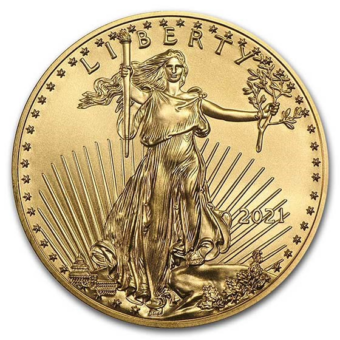Welcome to this week’s edition of The Weekly Silver and Gold Rush! In last week's precious metals market, gold and silver swayed in step with fluctuating inflation data, economic predictions, and anticipated actions of the Federal Reserve. Let’s dissect these intricate steps, probing the market's evolution from Monday's policy tightening anticipation to Friday's burgeoning optimism for an interest rate hike pause. Let’s examine the pressures exerted on gold by soaring consumer sentiment, the defensive measures suggested by UBS amidst looming recession fears, and the ascension of gold and silver prices buoyed by moderate inflation data. We also explore the subdued bullion market and silver's surge fueled by a weakening dollar and a potential Federal Reserve pause. Gearing up for next week, we preview vital economic releases and their potential impacts on the precious metals landscape. Ready to dive in?
The Gold Trail: A Daily Journey Through the Week's Market
Monday - 7.10.23: Gold remains stable as investors await U.S. inflation data, while palladium prices drop. Gold futures settle slightly lower. Focus is on upcoming U.S. CPI data and expectations of further policy tightening. Declining interest rates have dampened gold's appeal, resulting in a 7% drop in prices since early May.
Tuesday - 7.11.23: Gold prices rise as the dollar and bond yields decline ahead of U.S. inflation data. Spot gold gains for a third consecutive session. Dollar index reached its lowest level since May, making gold more affordable for holders of other currencies. Analysts predict that a soft inflation reading could push gold prices up to $1,950. Concerns over the impact of rate hikes on the economy provide support for gold. Focus on upcoming U.S. consumer prices data expected to show a cooling trend in June.
Wednesday - 7.12.23: Gold and silver prices rise after U.S. inflation report falls short of expectations. The dollar weakens, stocks rally, and Treasury yields decline. International markets show mixed to positive trends.
Thursday - 7.13.23: Gold and silver prices rise as U.S. inflation report suggests a potential end to interest rate hikes. Analysts predict a positive outlook for commodity markets. Asian and European stock markets show mixed trends. China's weak export and import data has a slight impact on commodity markets. The U.S. dollar weakens, supporting the raw commodity sector. Crude oil prices remain stable.
Friday - 7.14.23: Gold and silver prices remain stable as trader optimism rises amid expectations of an end to Federal Reserve interest rate hikes. However, concerns loom over a global economic recovery due to discouraging economic data from China.
Gold Under Pressure as Consumer Sentiment Soars Beyond Expectations
Gold, while maintaining consolidation above $1,950 per ounce, is witnessing a surge of selling pressure as U.S. consumer confidence significantly surpasses economists' projections. The University of Michigan reports a leap in its preliminary Consumer Sentiment Index to 72.6, up from June's revised 64.4, beating consensus forecasts that anticipated a reading around 65.5. The significant increase in sentiment, observed across all demographics except lower-income consumers, is largely attributed to the continued easing of inflation and stability in labor markets. Consequently, this surge in consumer optimism appears to put pressure on gold prices, with August gold futures falling by 0.39% on the day to $1,956.20 an ounce.
Navigating Recession Fears: UBS Recommends US Treasury and Gold Investments
UBS Wealth Management suggests that investors should fortify their portfolios with safer assets such as gold and bonds, predicting a possible mild recession in the United States. This forecast comes as a result of 10 successive Fed interest rate increases, which could potentially weaken the US dollar. Gold is projected to peak at $2,000 per ounce within the next six months, and the bond market may experience its biggest bull market in a decade. While there's been a surge in the S&P 500 index and gold prices, concerns are now shifting from inflation to economic stability. Amid these global financial shifts, investors are also closely monitoring China's economic growth strategies for signs of rejuvenation.
Gold and Silver Surge to Three-Week Highs on Tamer Inflation Data
Gold and silver futures reach their highest levels in weeks as the U.S. dollar weakens after the release of June inflation data. Gold futures for August delivery settle at $1,963.80 per ounce, the highest since mid-June, while silver futures for September delivery end at $24.95 per ounce, the highest since May. The slowdown in inflation raises expectations that the Federal Reserve's interest rate hikes may soon come to an end. The weaker dollar further supports the prices of dollar-denominated metals. Traders anticipate a halt to interest rate hikes, leading to a decline in the U.S. dollar index and strengthening Asian currencies.
Analyst Projects Phenomenal Gold Upside and Fed Pivot
Gold is poised for a potential breakout to $2,500, signaling significant upside, according to Florian Grummes, Managing Director at Midas Touch Consulting. Grummes highlights the consolidation pattern since 2011 and emphasizes that gold only needs to surpass the $2,070 level to initiate a rally of $600 within the next six to eight months. Although the timeframe for breaching this level remains uncertain, Grummes believes gold's upward trajectory will continue for the next two to three years. The technical outlook suggests that gold could quickly reach $2,500 and potentially advance to $3,500 and $5,000, with a downside support level around $1,800. Grummes disagrees with the Federal Reserve's hawkish stance, predicting that economic troubles will force them to pivot and lower rates by the end of the year. Additionally, he views gold as a leading indicator for this potential Fed pivot. Grummes also comments on the crack-up boom in the U.S. stock market and the ongoing global shift away from the dollar, indicating a longer-term process unfolding over the next decade.
Mint Institutions See Bullion Market Subdued as Investors Await Central Bank Signals
The physical gold and silver bullion market remains subdued as investors adopt a cautious "wait-and-see" approach, monitoring the direction of central bank monetary policies globally. Despite falling gold prices in June, the U.S. Mint experienced a significant decline in sales, while the Perth Mint reported slightly improved sales compared to last year but weaker overall demand in 2023. Analysts attribute gold's challenging environment to central banks, particularly the Federal Reserve, raising interest rates to combat inflation. Silver demand has been even more lackluster, affected by rising interest rates and recession fears impacting industrial demand. Investors are eagerly awaiting a clear indication that central banks have concluded their aggressive tightening cycle before actively re-entering the market and driving physical demand.
Silver Prices Surge on Weaker Dollar and Potential Fed Pause: Short-Term Outlook Remains Cautiously Optimistic
Silver prices have reached a one-month high as a result of a weaker U.S. dollar and the possibility of the Federal Reserve pausing its monetary tightening policy, bolstering investor sentiment. Despite concerns about further interest rate hikes, silver has outperformed gold recently due to lower-than-expected inflation pressures. However, analysts caution that sustained higher interest rates and other factors may limit silver's short-term breakout potential. The market eagerly awaits the central bank's rate-setting meeting and key economic data to gain clarity on inflation trends. Nonetheless, a potential year end rally could be on the horizon if the Federal Reserve begins cutting rates in response to recessionary conditions. Technical indicators support a bullish sentiment in the short term, but caution is advised considering the near-term overbought conditions.
Dollar Buckles as Fed Nears End of Hiking Cycle Amid US Disinflation Signs
The dollar plunged to its lowest level since April 2022 as diminishing U.S. inflation strengthened expectations that the Federal Reserve would only raise interest rates once this year. This decline eroded the dollar's yield advantage against other currencies, causing the dollar index to fall to a 15-month trough. The euro, yen, sterling, and franc soared to new highs, with the euro experiencing its longest winning streak against the dollar this year. The U.S. data indicated moderating inflation, with producer prices and consumer price index both showing slower growth than expected. While the dollar faced weakness in the short term, some believe that the U.S. economy's relative strength will provide support, although the dollar's future trajectory remains uncertain.
Next Week’s Key Events
Monday, July 17: The week begins with the Empire State Manufacturing Survey for the month of July, scheduled for 8:30 am.
|
How This Might Impact the Precious Metals Market The Empire State Manufacturing Survey can influence gold and silver markets as it reflects manufacturing activity in New York State—a key economic area. High manufacturing activity can signal a robust economy, potentially strengthening the dollar and putting downward pressure on gold and silver prices. Conversely, low manufacturing activity can imply economic weakness, which might weaken the dollar and boost gold and silver as safe-haven assets. |
Tuesday, July 18: The June U.S. The Retail Sales report will be published at 8:30 am. At 9:15 am, data on Industrial Production and Capacity Utilization for the same month will be released. At 10:00 am, there will be an update on the Home Builder Confidence Index for June.
|
How This Might Impact the Precious Metals Market
|
Wednesday, July 19: The only report today will be the June Housing Starts, scheduled at 8:30 am.
|
How This Might Impact the Precious Metals Market Housing Starts: More housing starts indicate economic strength, potentially strengthening the dollar and pressuring gold and silver prices downwards. Conversely, fewer starts could suggest economic weakness, possibly boosting gold and silver as safe havens. |
Thursday, July 20: Thursday begins with the Initial Jobless Claims data at 8:30 am, covering the week up to July 15. Simultaneously, the Philadelphia Fed Manufacturing Survey for June will be released. At 10:00 am, two sets of data will be unveiled: the Existing Home Sales figures for June and the U.S. Leading Economic Indicators for the same month.
|
How This Might Impact the Precious Metals Market
|
Friday, July 21: No scheduled events






















